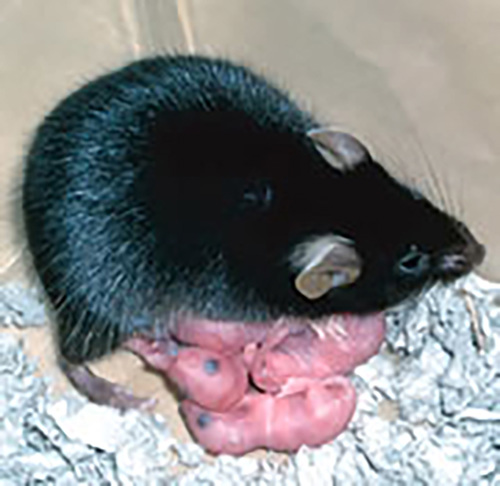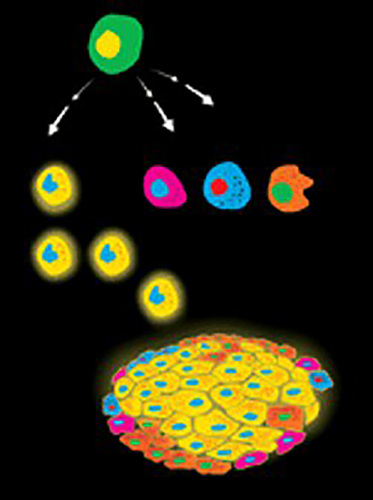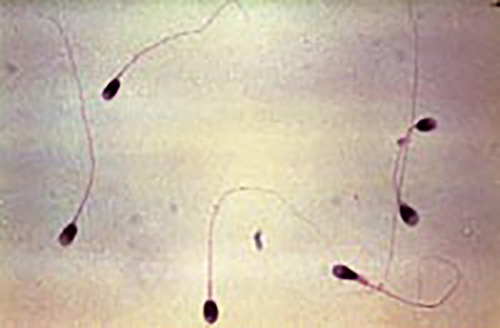
Is there any way for a gay couple to have a child that is their own?

- Related Topics:
- Futuristic science,
- Stem cells,
- Reproduction,
- LGBTQ+
A curious adult from California asks:
“Is there any way for a gay couple to have a child that is their own?”
Not right now, no. To have children, gay couples currently need to adopt or find a donor of the opposite sex.
But this doesn’t mean it will always be like this. At some point, perhaps in the next decade or two, it may be possible for two men or two women to have a baby together.
At first it might seem weird that we can’t do this right now. Seems like all we would need to do is combine two eggs instead of a sperm and an egg.
Combining two sperm wouldn’t work. There just isn’t enough in a sperm to sustain an embryo early on.
What about removing the DNA from an egg, and adding two sperm to that? Theoretically you’d end up with a child with the DNA of both dads, and just a bit of the donor’s DNA. But it turns out that won’t work either. The DNA in a sperm is a bit different than the DNA in an egg (this is called imprinting).
To successfully get an embryo going, you need to combine a sperm and an egg. Two of the same kind of DNA simply won’t work.
A group in 2004 did manage to get two female mice to have a pup. But to do this, they had to tweak one mom’s DNA to make it more male-like. And it wasn’t terribly efficient—it took 457 tries to get a healthy pup. The procedures and the tweaks themselves (and the failure rate!) would be unacceptable in people so this way is out.

So we need to come up with a different way. This where stem cells might be the answer.
The idea would be to either take a man’s cells and turn them into egg cells or to take a woman’s cells and turn them into sperm cells. Now these lab-created sperm could theoretically fertilize an egg and vice versa. A lab-created egg could be fertilized by sperm.
To get from a man’s skin cell to a woman’s egg will not be easy. We will need to convert his cell into an embryonic stem cell and then coax that stem cell into an egg. And we have to hope that in this process, the man’s DNA loses its identity as male DNA and becomes female DNA. Of course we need to do the same sorts of things to coax a woman’s skin cell into a sperm cell.
We can definitely do the first part these days. It is the second part that still needs a lot of work.
Stem Cells From Skin Cells
Most cells are stuck being the same kind of cell. A heart cell can only make new heart cells, a liver cell new liver cells and so on.
This obviously makes it tricky to turn a skin cell into anything else except for a skin cell. That is why we need stem cells for our approach.
Stem cells can become a bunch of different cells with the most powerful being embryonic stem (ES) cells. They can literally become any other kind of cell.
Now if a woman wants to turn one of her cells into a sperm cell, she needs for her cell to be embryonic. And of course, she doesn’t have them because she isn’t an embryo anymore. Luckily, scientists are getting very good at turning regular cells into something called induced pluriopotent stem (iPS) cells which act very much like ES cells.
Back in 2007 scientists managed this amazing feat by adding four genes to a skin cell. This had some potential problems because it is relatively hard to do and these genes can sometimes cause cancer.
But now things may have gotten much easier. In a new study, scientists found that treating blood cells with a mild acid or just squeezing them caused them to switch to iPS cells.
This means we definitely have the tools to do the first part. We can take someone’s cells and reprogram them to be something pretty similar to an ES cell. Now the question is whether we can get them to change into sperm or egg cells.

For same sex couples to have a child, the first step is to turn one of their cells into an iPS cell (like the one at the top of this image).
Changing ES Cells into Sperm or Eggs
First off, no one has yet changed a man’s iPS cells into an egg or a woman’s into a sperm cell. But a lot of progress has been made in mice.
Scientists in Japan managed to turn a mouse’s skin cells into something called primordial germ cells (PGCs). These are the stem cells that go on to make either sperm or eggs.
These scientists then went on to turn their lab-created PGCs into sperm and eggs that worked. The sperm fertilized an egg that resulted in a healthy pup and the egg was fertilized with the same result. So with a bit of work (well, a lot of work), they had managed to at least partly get to where we need to go.
Keep in mind that this isn’t what we need for same sex couples to have a child together. These scientists made sperm from male mice cells and eggs from female mice cells. We don’t know if they will be able to make sperm from females or eggs from males. And even if they do pull this off in mice, it does not mean we will be able to do something similar in people any time soon.
First off, the PGCs made this way are not exactly like natural PGCs. They are perfectly fine for laboratory use in mice but getting similar results for people probably wouldn’t be good enough. Lab stem cells need to pretty much be identical to natural ones.
Which brings us to the second problem: we are not mice. The signals needed to change a human iPS cell into a PGC are going to be different enough that scientists are going to need to do a lot of testing with human cells. Besides taking a long time, this brings up another problem—human embryos.
To test their progress with mice, these scientists went through a lot of mouse embryos until they hit on the right set of conditions. This would obviously be a problem in people. They are trying to get around this by doing work in monkeys and then trying people but still, at some point they’ll have to move to people.
And as if this isn’t enough, they actually didn’t turn the cells into sperm in a petri dish. What they did instead was put the cells into an infertile mouse and let nature make them. Seems an unlikely way to make them in people!
Also again, remember that they have not made eggs from a male mouse or sperm from a female mouse. We don’t know if that will work or if it does, if the sperm or eggs will work properly.

The hope is that the process of turning a cell into an iPS cell will erase all that imprinting that makes male DNA male and female DNA female but no one knows if that will happen or not. The fact that the PGCs aren’t quite the same as their natural counterparts suggests that vestiges of the old maleness or femaleness still lingers in their DNA.
So the bottom line is that scientists have made huge strides in figuring out how to take adult mouse cells and turn them into sperm and eggs. At the very least, once they get this working in people, infertile males and females may be able to have babies. And who knows, they may even work it out so that same sex couples can have kids together. But it’s still a long way in the future.

Author: Dr. D. Barry Starr
Barry served as The Tech Geneticist from 2002-2018. He founded Ask-a-Geneticist, answered thousands of questions submitted by people from all around the world, and oversaw and edited all articles published during his tenure. AAG is part of the Stanford at The Tech program, which brings Stanford scientists to The Tech to answer questions for this site, as well as to run science activities with visitors at The Tech Interactive in downtown San Jose.
 Skip Navigation
Skip Navigation
